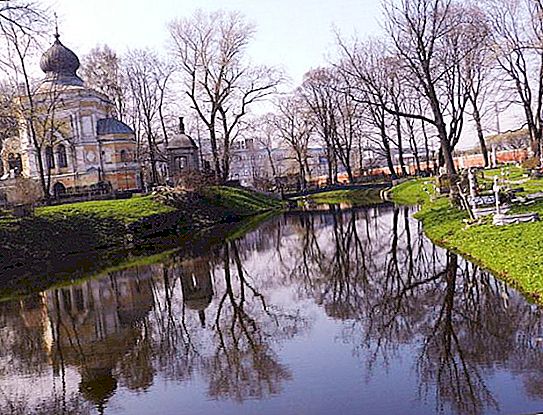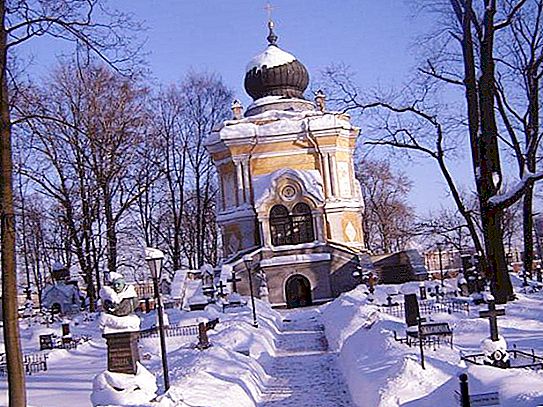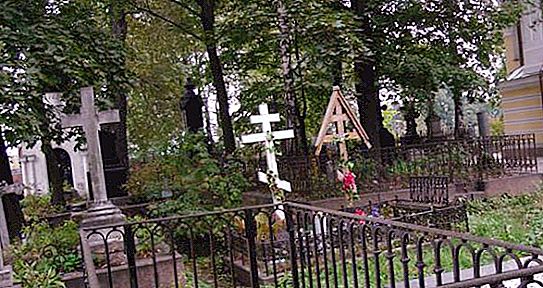Nikolskoye cemetery is the third of the necropolises of the Alexander Nevsky Lavra in terms of opening date. Outstanding figures and famous people from different eras are buried here. Today, a cemetery with a large number of ancient tombstones and crypts has undeniable historical value.
History of the founding of the necropolis

In 1861, near the Holy Trinity Cathedral, a new Zasoborny cemetery was opened. According to historical documents, this necropolis has always been considered particularly prestigious and expensive. Initially, holders of honorary titles and other prominent citizens were buried here.
In 1868-1871, the church of St. Nicholas of Myra was built, the cemetery changes its name and has since been called Nikolsky. Necropolis since its foundation is more like a city park garden than a mournful place. The territory has a regular layout, the cemetery even has its own pond. They buried famous and wealthy people on Nikolsky. Each family seemed to strive to compete with all the others in the splendor of the decoration of the grave. Chapels, crypts, monumental portals, crosses and obelisks of all shapes. At many burials, decorative sculptures and even portrait busts of the deceased were installed.
Periods of decline and rebirth

At the end of the 19th century, the necropolis looked solemn and magnificent. The most spectacular panorama opened upon him when viewed from the eastern shore of the pond. From this point of view, a view of the buildings of the Alexander Nevsky Lavra: the Trinity Cathedral, the Annunciation and Fedorov Churches.
After the 1917 revolution, many ancient necropolises of Leningrad were closed. In most cases, the active development of the city contributed to this. So the Nikolskoye cemetery, which was once located on the outskirts, turned out to be surrounded by city blocks. The necropolis was officially closed in 1927. Even then, the cemetery could be turned into an open-air city park museum. But instead, part of the most valuable burials was transferred to the neighboring Literary bridges of the Volkovsky cemetery and the Necropolis of art masters.
Nikolskoe also suffered greatly from looters. In search of treasures, crypts were hacked, graves dug up, and even elements of gravestones were stolen. Some time later, the city department, monitoring the ancient necropolises, carried out the elimination of "ownerless" burials. As part of this dubious program, hundreds of ancient tombstones from unvisited graves were destroyed. St. Nicholas Church also suffered.
They tried to convert the temple into a crematorium, then it was used as a warehouse. The value of some monuments was officially recognized in 1940. However, the cemetery was remembered only in the 1970s during the complex restoration of the ensemble of the Alexander Nevsky Lavra. At that time, a new wall of columbarium was erected. In 1985, the church was reconstructed and re-consecrated, after which the comprehensive improvement of the cemetery territory finally began.
Interesting facts and common myths

Was the Nikolskoye cemetery reopened? In fact, since 1992, burials have rarely been held here. The cemetery again acquired a special status closed to "mere mortals." Over the years, less than 20 new graves have appeared on it. Such famous people as Lev Gumilev, Mikhail Malafeev, Igor Glebov, Dmitry Filippov, Anatoly Sobchak and others were buried here. A separate site in the cemetery is allocated for the burial of monks and clergy. In the historical part of the necropolis, you can see the tombstones of famous military leaders, scientists, inventors, cultural and art workers. Like any other, Nikolskoe cemetery is shrouded in a train of mystical superstitions and urban legends. The most terrible of them belong to the present. According to some sources, adherents of Satanic sects periodically appear on the ancient necropolis and conduct various rituals there.




